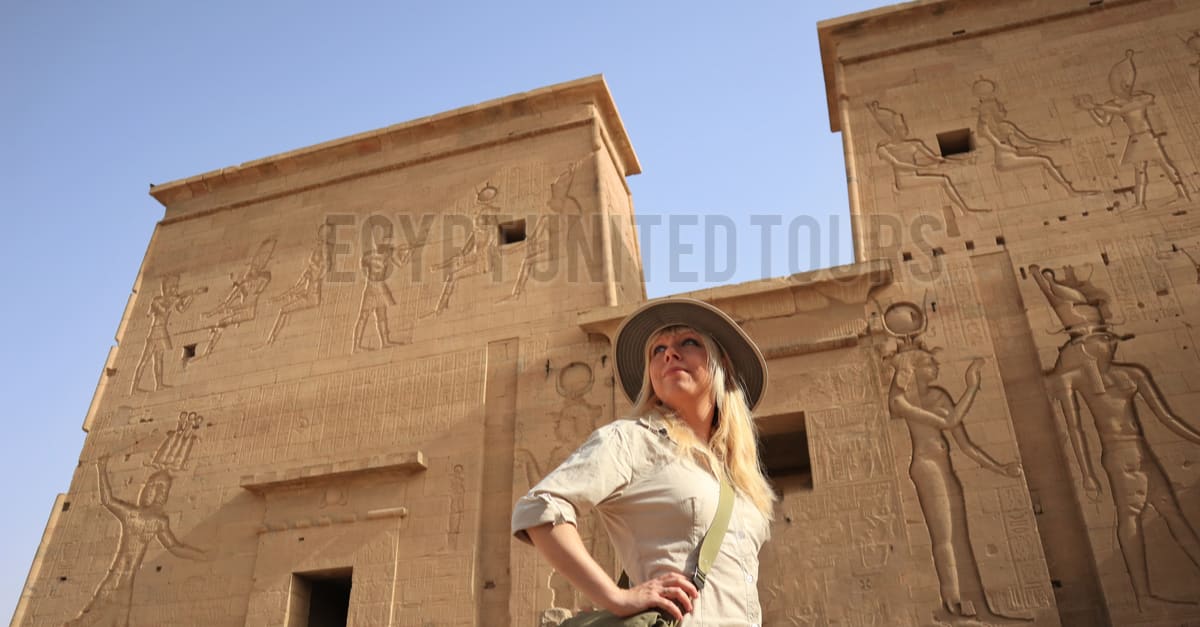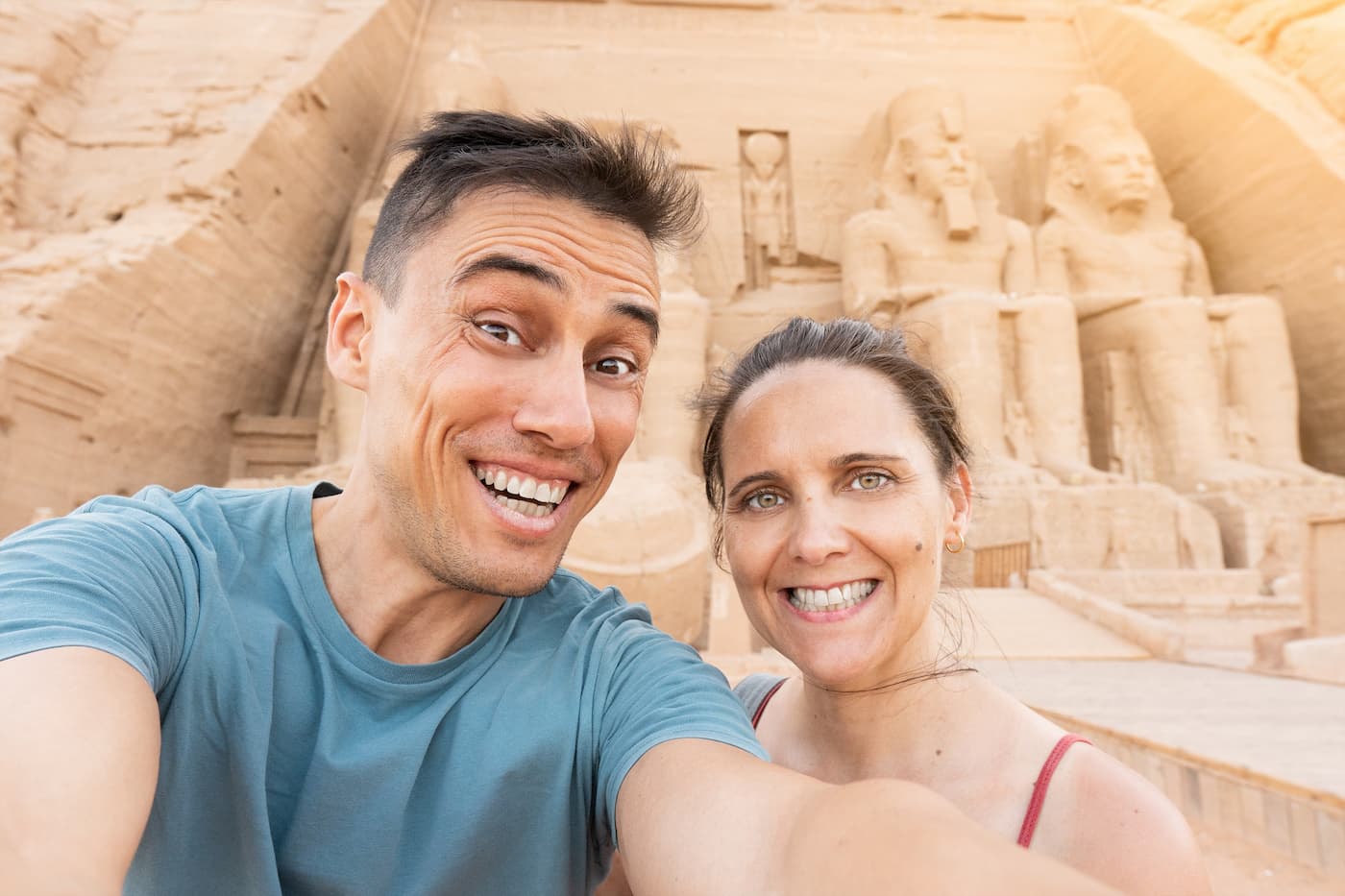Introduction: The Pyramid of Unas
The Pyramid of Unas is set in Saqqara, outside Cairo. In ancient Egypt’s monuments, this one takes a special place. It was built for Unas, the 5th Dynasty pharaoh who ruled a lifetime that is dated approximately between 2375 and 2345 BC. At first sight, one might prompt a comparison with the Great Pyramid of Giza and declare it small in size. The size matters, but the history matters more.
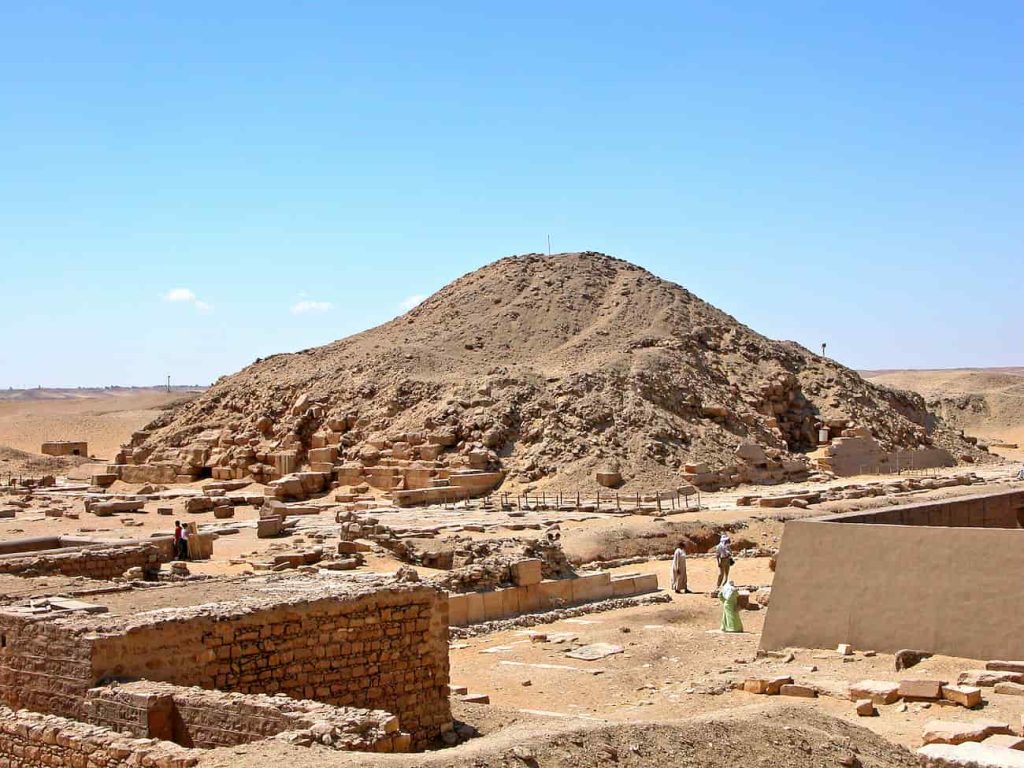
Pyramid of Unas
It really is a puzzle that differentiates the pyramid, and that distinction comes through the Pyramid Texts. In essence, these were words carved inside an actual royal tomb. They were supposed to guide the pharaoh en route to his afterlife. This is pretty magnificent, for the significance of these texts also permeated other media, such as alternate writing on later pyramids and coffins, and even on the famous Book of the Dead.
With decorations, minus the imposing exterior view, and well-crafted descending corridors leading to the burial chamber, the pyramid manifests that the builders were making a statement. They wanted to make a statement about their beliefs and architectural sophistication. Being in Saqqara, it is close to monuments such as that of Djoser: what this means is that the Egyptians were building upon what had come before while simultaneously managing to innovate and push boundaries. These days, one can finally enter inside the pyramid and see the trace of everything-it is the beginning of something that was to very much shape burial tradition for much of the following centuries.
Unas Pyramid Egypt Facts

Pyramid of Unas
The Unas Pyramid is not the largest in Egypt, but it does have an impressive and interesting story. The pyramid was built in the 5th Dynasty, approximately 2375 BCE, and it was built as a tomb for Pharaoh Unas, who was the last leader of the dynasty. The height of the building does not exceed 43 meters. However, the first ever gravestone, the Pyramid Texts, was written on its walls. These inscriptions incorporated over 700 communicative invocations and prayers that would support his journey into another world.
Besides, another curious fact about this pyramid is that it was in Saqqara, the necropolis of Memphis. It was the land of the beginning of Egypt. This ancient area is filled with other important structures to see, one of which is Djoser’s Step Pyramid. The fact that Unas located his pyramid in this complex stresses the bond that this pharaoh recognized with his predecessors, incorporating elements of the past into the new form.</p>
The construction plan of the pyramid includes a descending corridor, an entrance room, and the actual burial chamber, showing the advanced symbolic and ritual
aims. Some pieces of black basalt, which the sarcophagus of Unaz was made of, were, along with writings and drawings on the walls and ceilings.
Although less grandiose than the rest, the Unas Pyramid is archaeologically valuable. This is because the texts, construction, and situational attributes of that pyramid reveal the religious, funerary, and kingly aspects of the Old Kingdom in a uniquely defined system within Egypt’s archaeological heritage.
Unas Pyramid Inside
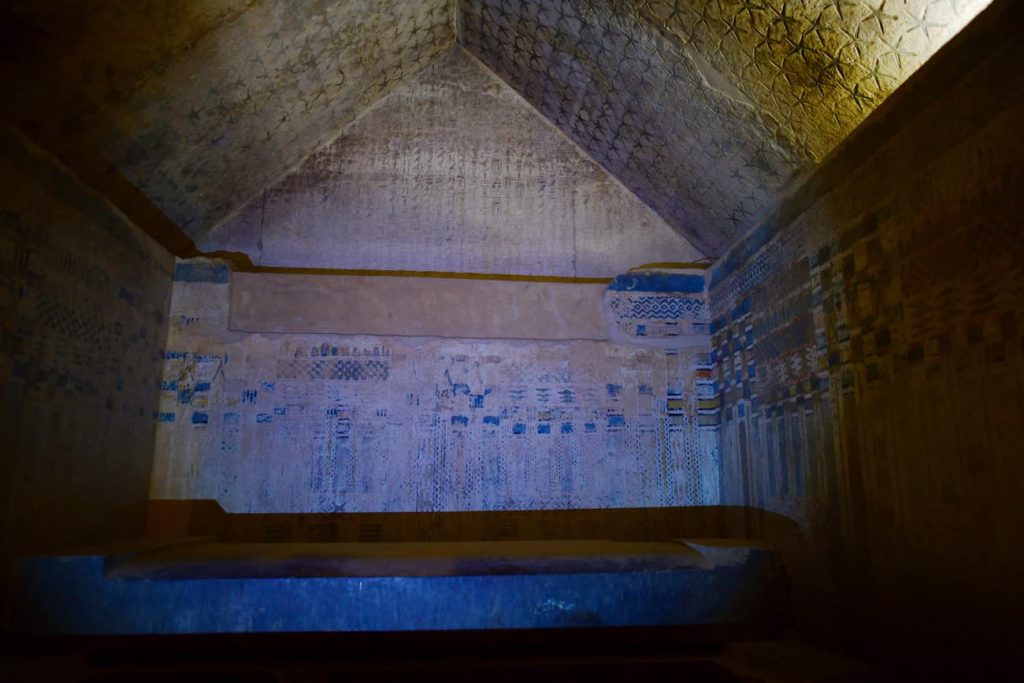
Inside Pyramid
The Unas Pyramid inside reveals a carefully planned structure designed to guide the pharaoh into the afterlife. The small size of this Old Kingdom tomb does not diminish its impressive internal features. The descending passageways lead visitors to an antechamber before reaching the burial chamber which contains the famous Pyramid Texts that cover all walls and ceilings. The inscriptions contain more than 700 spells and prayers and ritual instructions that served to protect the king during his passage to the gods.
The ceiling of the burial chamber displays star patterns that represent both the night sky and the pharaoh’s heavenly connection. The blue-painted hieroglyphs on limestone walls serve as visible texts for ritual purposes. Archaeologists found remnants of the black basalt sarcophagus which originally contained Pharaoh Unas’s body.
The interior design follows religious symbolism above all else while disregarding the need for monumental dimensions. The narrow passages and small chambers of the tomb followed a spiritual design approach instead of pursuing grandeur because Egyptian tomb design had evolved. Every passage and chamber had a purpose, supporting rituals, prayers, and offerings to protect the king.
The Unas Pyramid interior allows modern visitors to understand how architecture united with religious elements to fulfill both functional and sacred requirements. The small dimensions of this structure do not diminish its importance as a vital source for understanding ancient Egyptian burial customs.
Egypt Standard Tours
You may now pick from a wide choice of Egypt vacation packages that take you to explore the pharaonic heritage, the Giza Pyramids, the Nile River, and the Red Sea, as well as the Museum of Civilization.
Unas Pyramid Texts
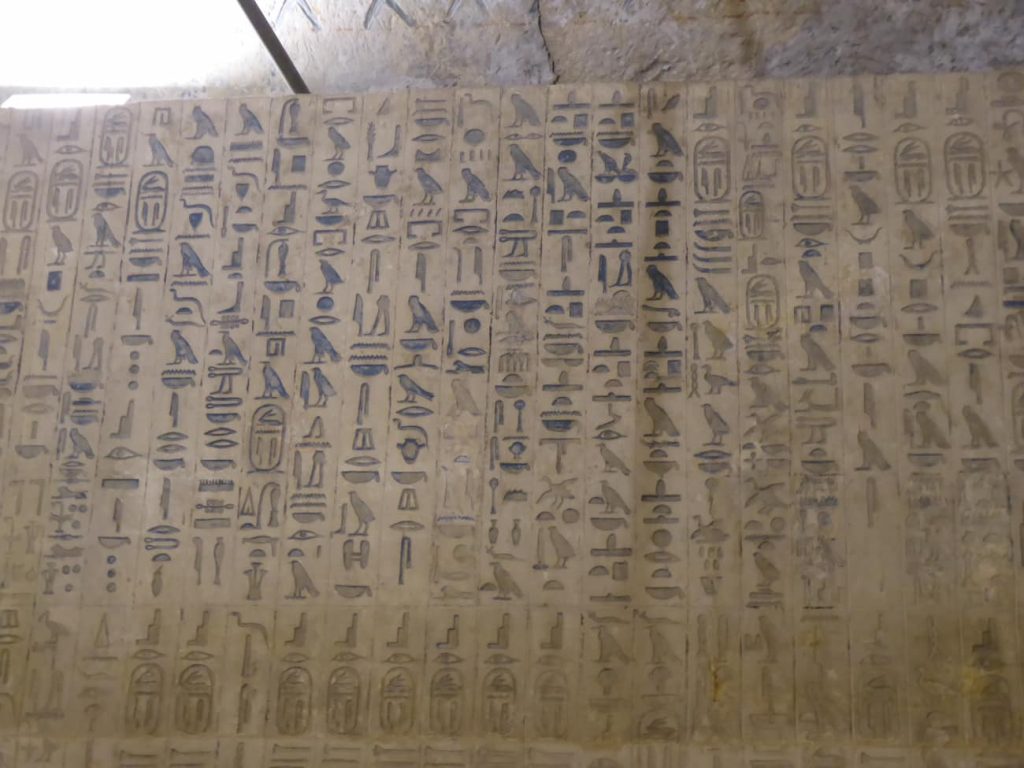
Pyramid Texts in Unas’ Pyramid
The sarcophagus texts of the Pyramid of Unas are the distinguished characteristic of the burial of Woolx. This aspect of the remains’ interment signals Egyptian religious beliefs. As such, the inscriptions were in the walls of burial chambers and their doors, and also the doorways. In addition, in a form not very different from this one, they are also the foremost known religious texts in a royal tomb. Also, there were texts that offer more than seven hundred prayers, invocations, and a few instructions to perform rituals for the preservation of the Kings in different religious situations after death.
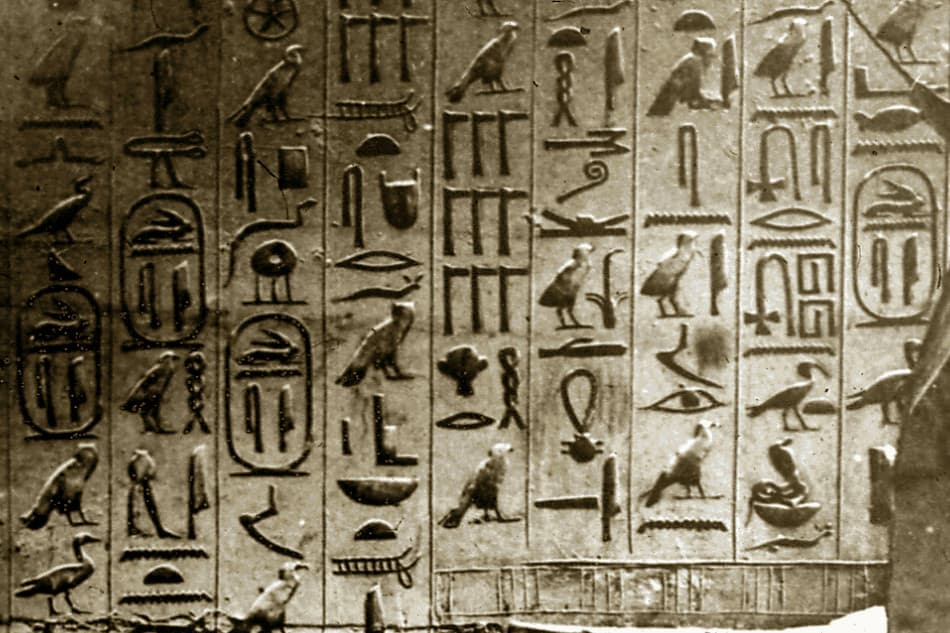
Unas Pyramiden textes
The content of the inscriptions serves different functions. Certain spells, for example, are to enable the king to rise to heaven and to become a member of the deities, whereas on the other hand, here they are within a special contest integrative. There are new verses that deal with the dangers of the next world. These comprise hymns and instructions which the priests used during the performance of certain ceremonies to speak on the king, impressing the gods of the king. Kha hieroglyphs the word in the light shade of the blue, to make it much brighter, pop out against the pale light limestone.
Influence on Later Funerary Practices
Later Egyptian funerary practices were based on the Pyramid Texts. Coffins, tombs, and ultimately the Book of the Dead, in the same way, began to be included in the texts, with inscriptions playing an expanded role in the burial rites. Ancient history experts are currently looking into these materials to reconstruct the mindset of the Old Kingdom era, its worship practices, and especially the occupied position of the pharaoh.
Such drawing on sources makes it clear that any structure, even a fairly moderate pyramid. That could carry great social and ide monuments. Using rituals as an illustration, the texts show the viewer how the proper spells guarded the pharaoh and helped him in his journey. This also shows how Egyptian civilization constellated religion, built objects, and magic alike.
Unas Pyramid, Egypt Location
The Unas Pyramid in Egypt stands at the Saqqara necropolis which lies about 30 kilometers south of contemporary Cairo. The Saqqara necropolis operated as Memphis’ burial site throughout history while containing pyramids and mastabas and tombs that spanned different dynasties. Unas constructed his pyramid in Saqqara’s southern section to connect with earlier rulers, including Djoser while introducing new concepts through the Pyramid Texts.
The pyramid stands elevated to allow distant observation despite its small size. Archaeological discoveries of official and noble tombs surrounding the pyramid demonstrate how the pharaoh’s funerary complex served as a central location for religious and ceremonial activities. The valley temple and causeway, and mortuary temple formed an interconnected complex which performed religious ceremonies and accepted offerings throughout numerous years.
The strategic location of Saqqara provided multiple operational benefits. The location near the Nile River enabled better material transportation and provided suitable conditions for construction. The king used his position near earlier pyramids to connect with Egyptian traditions while developing permanent burial innovations.
The Unas Pyramid in Egypt allows modern visitors to see the pyramid structure together with its temples and adjacent buildings. The site maintains historical value by showing how Egyptians used geographical and religious elements to build architectural structures that honored their pharaohs.
Architecture and Design
The architect of the Unas Pyramid seems to have had a laudable intent of meshing traditional, spiritual, and innovative aspects into one design. It could not be a big pyramid like the famous ones in Giza. But it is also about 43 meters high, and the sides of its base measure 58 m. It is sharp-angled with the sides rising at around a 56-degree slope. It gave a relatively smaller image of it, hence less imposing features, for the purpose of creation to concentrate on the internal significance and overall geometric design of the pyramid.
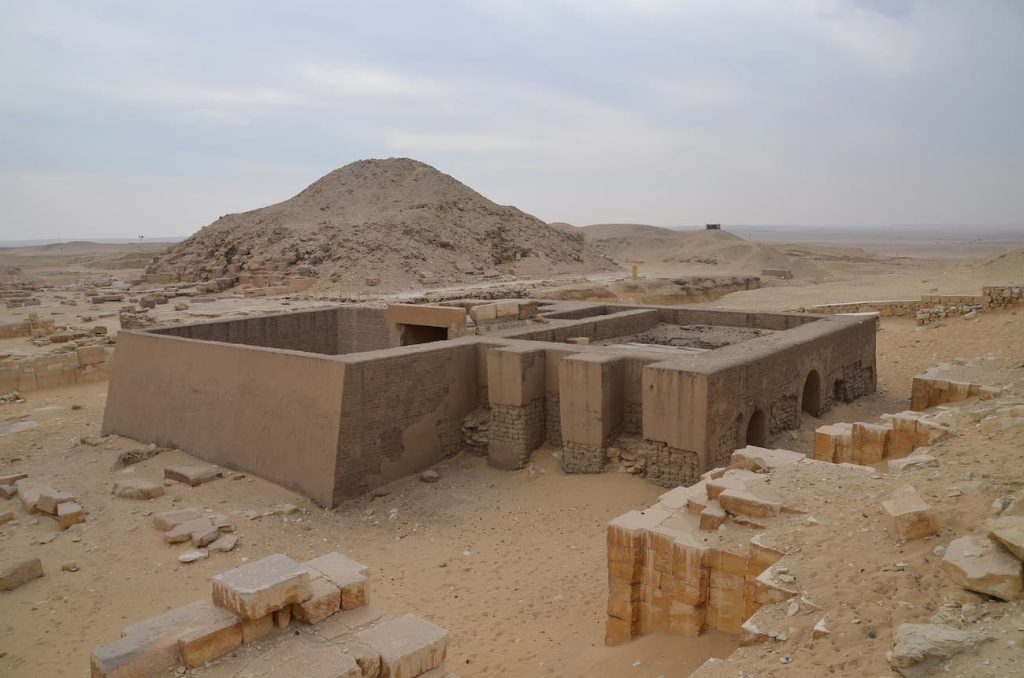
a smooth-sided pyramid built in the 24th century BC
Understanding the problem set, the setback with this particular pyramid is its lack of usable corridors or chambers. The Unas burial chambers are located, as described before, in the middle of the pyramid itself. The entrance is from inside the pyramid, the vertical shaft, to the western side of the monument. The design supporting the tomb of Unas is instinct with the Pyramid Texts, which were on the walls. Of course, this is not an ideal tomb type and cannot house more than one body.</p>
The pyramid was not a standalone structure; it was part of a larger necropolis, which swelled out upon the first plateau, the leveled area around the pyramid it
self. There was no other pyramid in Egypt that stood on a plateau – one that also leveled with Sphinx Pass, now dubbed Giza Plateau – except Djoser`s Step Pyramid north of Saqqara</strong>. The complex housed the pyramid, the statues, and the most sacred temple underneath the pyramid; however, not all pyramids had such chambers.
The Pyramid Complex
The Unas pyramid complex contains multiple religious and ceremonial structures that extend past the main pyramid structure. The Old Kingdom pyramid design included temples and courtyards and symbolic elements to honor Pharaoh Unas and facilitate his afterlife transition.
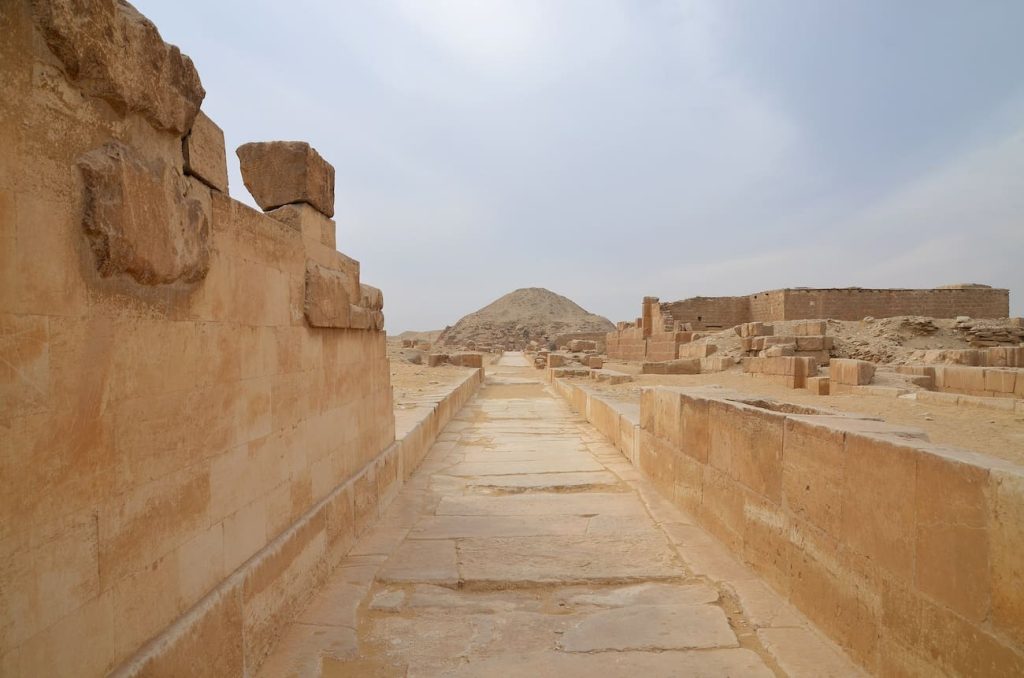
Causeway leading to the pyramid
The valley temple stands as the first part of the complex which exists near the Nile River. The priests conducted their rituals and prepared offerings and performed ceremonies at this temple before moving the pharaoh’s body along the causeway to the mortuary temple situated near the pyramid. The covered causeway that linked the valley temple to the mortuary temple served both ritual organization and protection of sacred items and materials.
The mortuary temple of Unas stands directly beside the pyramid structure. Priests placed statues and offerings and ritual items inside the temple to pay homage to the deceased king. The Pyramid Texts inside the tomb receive additional decoration from inscriptions that appear on walls and chambers. These sacred spaces enabled priests to perform rituals for many years which sustained the pharaoh’s divine link with the gods.
A smaller satellite pyramid functioned as a symbol for the king’s ka which represents his life force. The pyramid complex and temple area featured open courtyards that served as spaces for public rituals and special gatherings.
The Unas pyramid complex demonstrates a purposeful arrangement of its components. Each spiritual component, including temples and the courtyard, worked together to establish the king’s divine status. The complex provides modern scholars with valuable knowledge about Old Kingdom funerary architecture. Also, the Egyptian practice of uniting religious rituals with ceremonial activities and architectural construction in one sacred space.
Why the Pyramid is Important
The Unas Pyramid holds a unique place in Egyptian history because it introduced innovations that influenced future royal tombs. Its most significant contribution is the Pyramid Texts, the first religious inscriptions in a king’s burial chamber. These spells and prayers guided Pharaoh Unas’s journey into the afterlife, ensuring his protection and immortality. Later tombs, coffins, and the Book of the Dead adopted similar inscriptions, showing the long-lasting impact of this innovation.
The pyramid also reflects a shift in architectural priorities. Unlike earlier pyramids, which emphasized size and visibility, the Unas Pyramid focused on spiritual and ceremonial function. Narrow corridors, decorated chambers, and star-painted ceilings all reinforced religious symbolism. Every element of the design, from the burial chamber to the mortuary temple, served a specific purpose in supporting the pharaoh’s eternal journey.
Its location in Saqqara further enhances its importance. By building near earlier kings, Unas linked his reign to royal tradition while also introducing personal innovations. Surrounding tombs of officials and courtyards for ceremonies show how the complex functioned as a hub for ritual activity.
What is One Drawback of the Unas Pyramid?
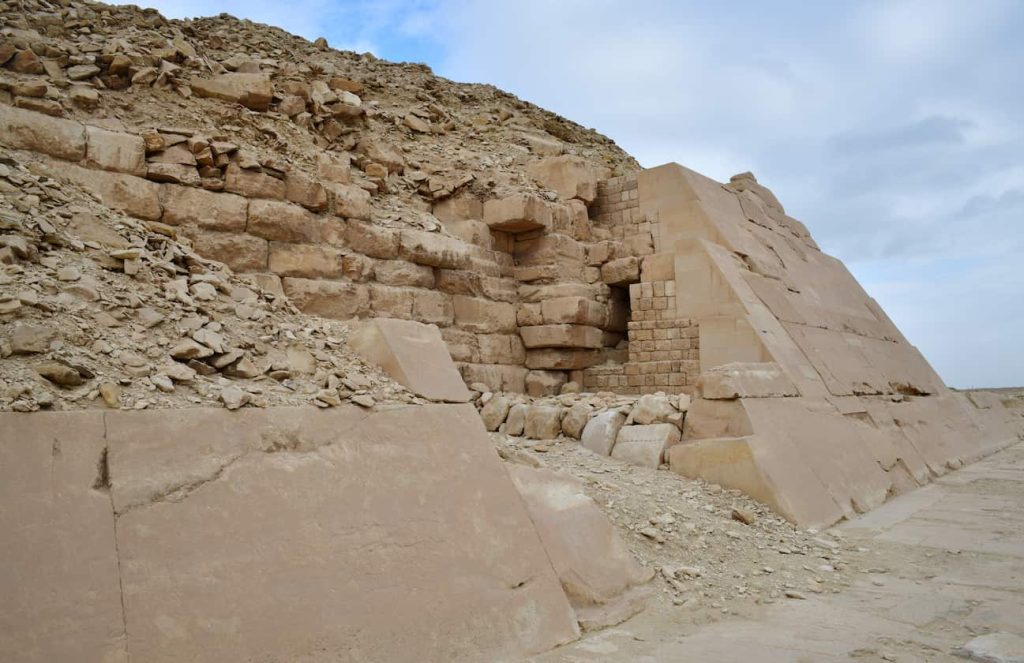
construction layers in the pyramid of Unas
The Unas Pyramid stands out because of its limited dimensions as its main negative aspect. The Old Kingdom royal pyramid stands as the smallest structure at 43 meters in height. The construction speed and resource efficiency of this size came at the cost of reduced chamber and corridor, and decorative element capacity. The smaller dimensions of this pyramid resulted in reduced visual presence when compared to the massive Great Pyramid of Giza.
The construction materials used in the pyramid’s construction present a significant disadvantage. The construction process employed thin limestone blocks for building both the core structure and the exterior casing. Natural processes combined with erosion have stripped away most of the outer layer so that the inner core remains visible. The structure appears fragile because of its exposed state, which makes it more vulnerable to damage over the years.
The pyramid’s restricted dimensions determine the way its interior spaces are arranged. The narrow passageways and limited chambers restricted both decorative elements and ritual areas, yet the Pyramid Texts maintained their complete integrity. The spiritual protection from inscriptions remained effective, yet the restricted design space prevented builders from adding complex architectural elements or ceremonial features.
The Unas Pyramid maintains its importance in history and culture despite its limitations. The Pyramid Texts, together with architectural breakthroughs and tomb design, influenced. It remains vital regardless of the pyramid’s construction difficulties and limited dimensions. The main disadvantage demonstrates how ancient builders managed to balance their available resources with religious needs and their design goals.
Conclusion
Overall, the Unas Pyramid is important not because of its size but because of its cultural, religious, and architectural contributions. It established practices that shaped Egyptian burial traditions for centuries and reinforced the pharaoh’s divine status in the afterlife. ons beyond measure as well. It’s the Unas that, particularly within the Fifth Dynasty, has gained the Pyramid Text inscriptions, which talk about the life of the deceased pharaoh in the afterworld. However, with a religious touch.
The master planning. Also, the pyramid-based Egyptian funerary practices endured the test of time for centuries; held together by orthodox practices and as reflective and spiritual rather than physical phenomena.


